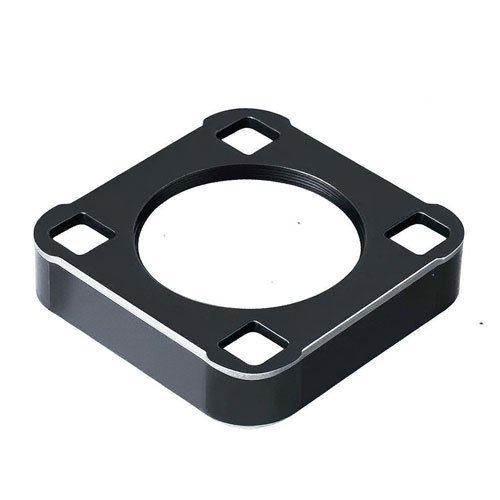CNC (Computer Numerical Control) machining has revolutionized the manufacturing landscape. As industries lean toward automation, the importance of high precision components cannot be understated. This article digs deep into how CNC machining companies can enhance efficiency through the production and utilization of high precision components.
Understanding High Precision Components
What Are High Precision Components?
High precision components refer to parts manufactured to tight tolerances, often measured in micrometers. These components are crucial in industries requiring exact specifications, such as aerospace, automotive, and medical sectors.
Why Precision Matters
- Functionality: Components that fit perfectly reduce mechanical failure and increase the reliability of the final product.
- Cost Efficiency: High precision reduces waste and the need for rework, ultimately minimizing production costs.
- Competitive Edge: In a market that increasingly values quality, producing high precision components can differentiate a company from its competitors.
The Role of CNC Machining in Precision Manufacturing
Advantages of CNC Machining
- Automation: CNC machines automate the cutting, drilling, and milling processes, leading to less human error and more consistency.
- Versatility: CNC machining can handle various materials like metals, plastics, and composites, making it suitable for multiple applications.
- Speed: High-speed machining capabilities allow for rapid production without compromising quality.
Technological Advances
- 5-Axis Machining: This technology allows the cutting tool to approach the workpiece from five different angles, enabling the manufacturing of complex shapes with unmatched precision.
- Advanced Tooling: High-performance cutting tools are specifically designed for maintaining sharpness and precision even under heavy loads.
- Real-time Monitoring: Utilizing IoT (Internet of Things) technologies enables real-time monitoring of machinery, allowing for immediate corrections to maintain high precision.
Strategies to Improve Efficiency with High Precision Components
- Invest in High-Quality Machines
Modern CNC machines equipped with advanced technologies can significantly improve efficiency. Investing in machines capable of high precision ensures that fabrication processes yield components that meet exact specifications.
- Optimize Tool Conditions
Regular maintenance and the use of high-quality cutting tools are imperative. Dull tools can lead to inaccuracies; thus, routine check-ups are necessary.
- Implement Robust Quality Control Systems
Quality control (QC) is essential at every stage of production. Using state-of-the-art metrology equipment, like coordinate measuring machines (CMM), can help ensure components meet required tolerances.
- Streamline Workflow Processes
Looking at the entire manufacturing workflow can reveal inefficiencies. By identifying bottlenecks and reallocating resources, companies can improve throughput and reduce cycle times, leading to higher efficiency.
- Leverage Software Solutions
Utilizing software for design (CAD) and manufacturing (CAM) can vastly improve the programming phase. Software can simulate production processes, allowing for adjustments before actual production begins.
- Train and Empower Workforce
Skilled operators are key to high precision manufacturing. Continuous training ensures that employees are familiar with the latest technologies and best practices.
Case Studies of Successful CNC Machining Companies
Company A: Revolutionizing Aerospace Components
Company A implemented 5-axis CNC machining technologies and invested heavily in operator training. The result was a 30% reduction in production time without compromising quality. They focused their quality control on each stage of production, ensuring that every component met the strict requirements of the aerospace industry.
Company B: Leveraging IoT for Real-Time Monitoring
Company B integrated IoT solutions to monitor machine performance in real-time. This strategy reduced downtime by 25%, as immediate adjustments were made when anomalies were detected, improving overall efficiency.
Future Trends in Precision CNC Machining
Sustainable Practices
As industries move towards sustainability, precision manufacturing must adapt. Companies are investing in eco-friendly alternatives in raw materials and focusing on reducing waste through efficient machining processes.
AI Integration
AI technologies are starting to play a role in predictive maintenance and optimization of machining operations. The ability to foresee equipment failures before they occur paves the way for increased productivity.
Conclusion: The Path Forward for CNC Machining Companies
In conclusion, the need for high precision components in CNC machining cannot be overstated. As competition intensifies, companies that invest strategically in high-quality machines, advanced technologies, and skilled laborers will not only improve efficiency but also establish lasting partnerships with satisfied clients.
Investing in high precision machining is not merely an option but a necessity for survival in the evolving manufacturing landscape. By embracing emerging technologies and fostering a culture of continuous improvement, CNC machining companies can ensure their success in a marketplace that increasingly values precision and quality.
—
-
Call to Action
If you’re ready to elevate your CNC machining operations and realize the benefits of high precision components, reach out to us today. Let’s work together to transform your manufacturing processes into models of efficiency and quality!
—
- By emphasizing a blend of insights, statistics, and real-world applications through case studies, CNC machining companies can better relate the significance of high precision components to potential clients and partners. The move toward more automated and precision-driven practices is not just beneficial; it is essential for thriving in the competitive manufacturing arena.





